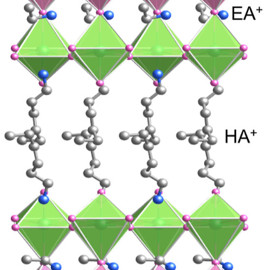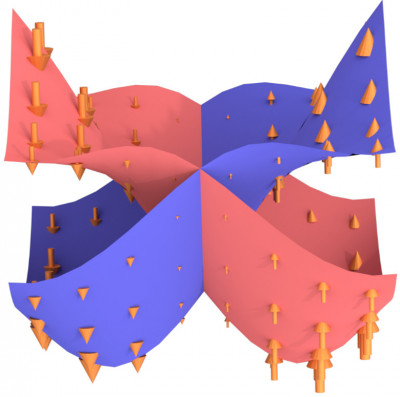News
Professor Joe Briscoe reflects on new materials for solar energy and computing, in Nature Reviews Physics
29 April 2025


Reflecting on the future of the field, Professor Joe Briscoe and his co-author, Professor Jian Shi of Rensselaer Polytechnic Institute in the USA, consider the use of non-centrosymmetric halide perovskite materials in future technologies including solar energy and computing. Being non-symmetric in structure, these materials are able to interact differently with light, and have the potential to be used to convert solar energy at much higher efficiency that today’s technology, or to enable high-speed, energy-efficient computing.
In the article, published in Nature Reviews Physics, Professors Briscoe and Shi give an overview of the fundamental properties of the materials and the theory of the interesting effects that they can display.
The interesting effects, such as interactions with polarised light, or the ability to convert sunlight into electricity via new mechanisms, has been known for some time. However, it has mostly been studied in more 'traditional' materials, such as oxides. While well established, these materials often do not produce very strong effects, and are often not good at absorbing light - limiting any potential gains in solar energy conversion efficiency. Also, there are a relatively small number of these 'traditional' materials that have the required lack of symmetry.
On the other hand, non-symmetric halide perovskites are really exciting because they often can display very strong versions of these interesting effects. They also often absorb light very well, meaning they have much better potential for new, high-efficiency solar energy devices. Finally, many of them are made using combinations of organic and inorganic components which are much more versatile in their structure, meaning that there are a huge number of potential ways to design new materials that display these effects.
As first such effects in these types of material were only reported just over 10 years ago, there is still so much that can be explored. In particular - by understanding how the effects work in more detail it should be possible to make 'designer' materials that have the best possible properties, such as giving a very strong interaction with light polarisation, or a very high energy conversion efficiency in solar energy devices.
Other applications for this material include:
- Light sensors
- Spintronics - a new kind of computing that uses the 'spin' of electrons to carry and process data, which could have lower energy consumption than current computing
- 'Spin opto-electronics' – opening up opportunities in light-controlled computing
- New understandings of fundamental properties of matter
- Neuromorphic computing – which aims to make computer systems that better mimic how neurons work in the brain
Professor Briscoe said, “This is a really exciting area that could have applications in future sensing, computing and high efficiency solar energy devices. We really hope that this article will be a useful guide to those working in or considering moving into the area to identify the key challenges and opportunities that exist, and to spur on the area to lead to new breakthroughs in understanding and technology development.”
| Contact: | Prof Joe Briscoe |
| Email: | j.briscoe@qmul.ac.uk |
| Website: | |
| People: | Joe BRISCOE |




